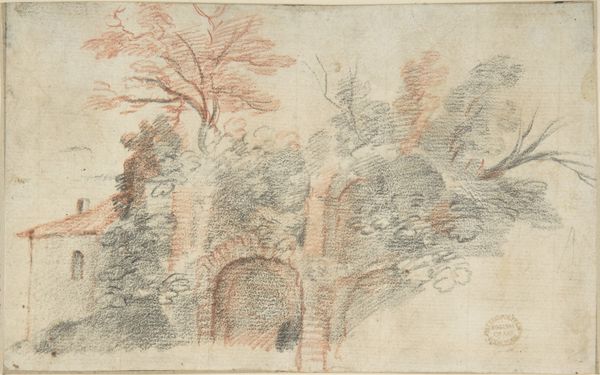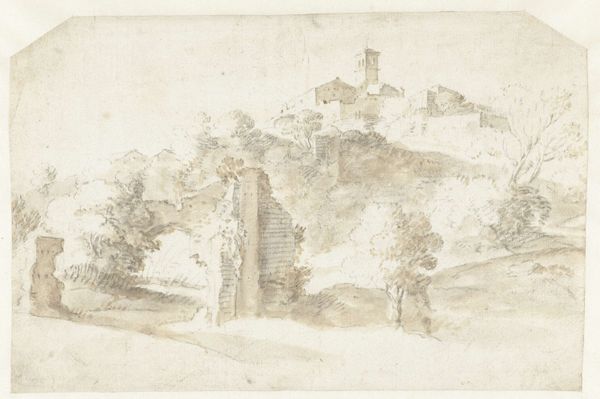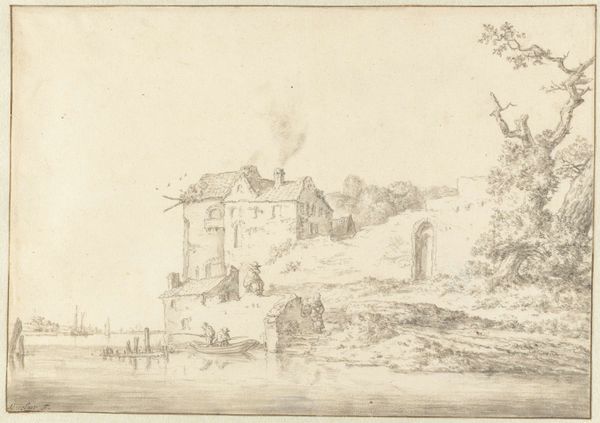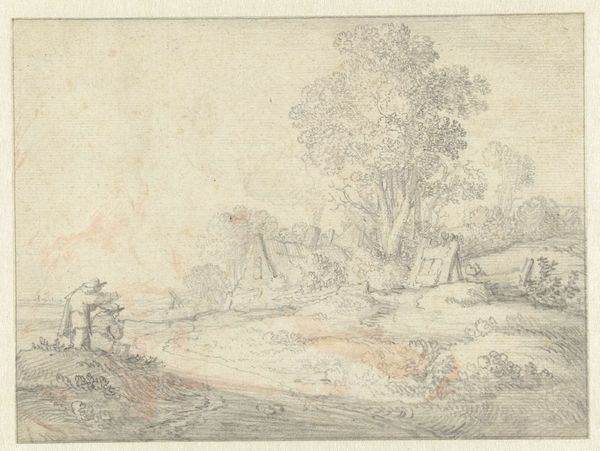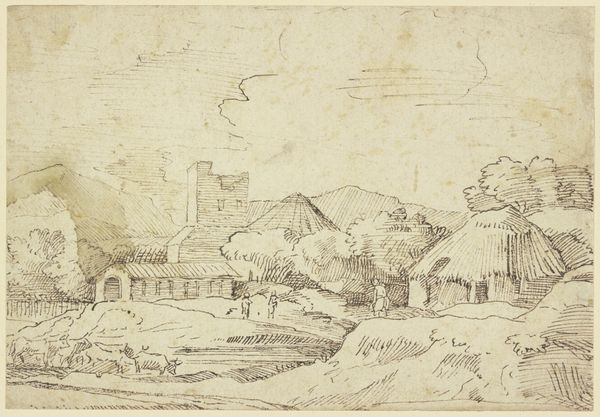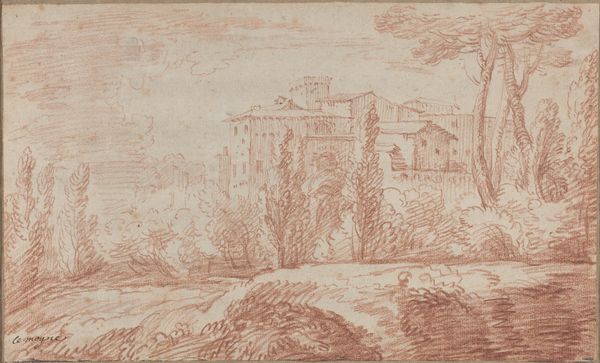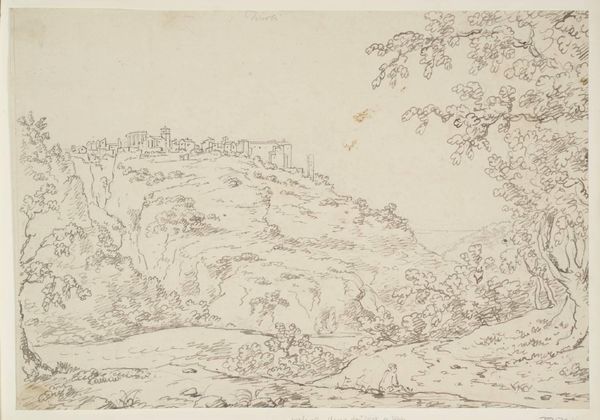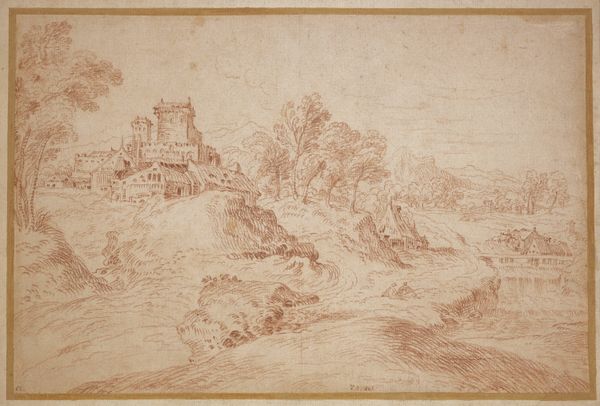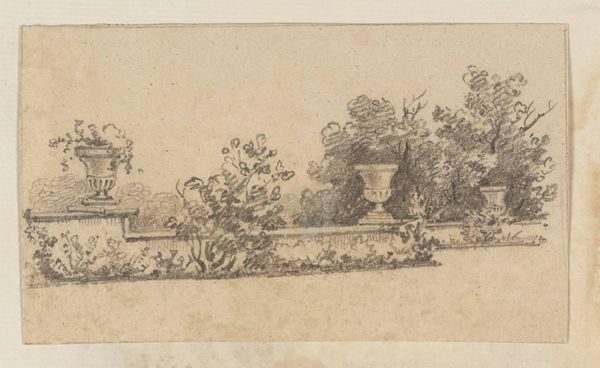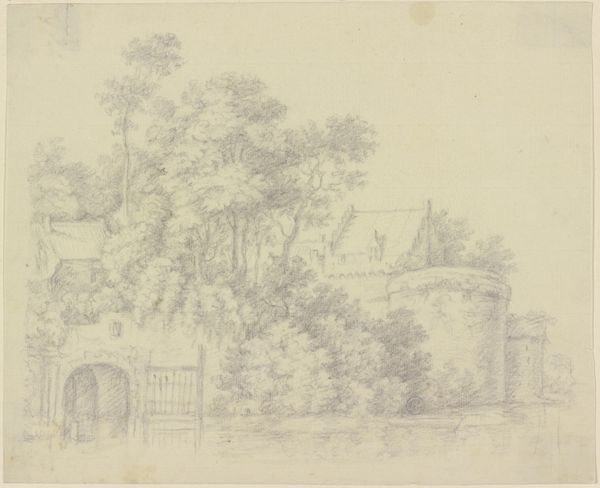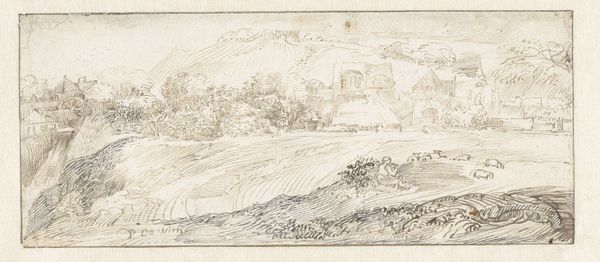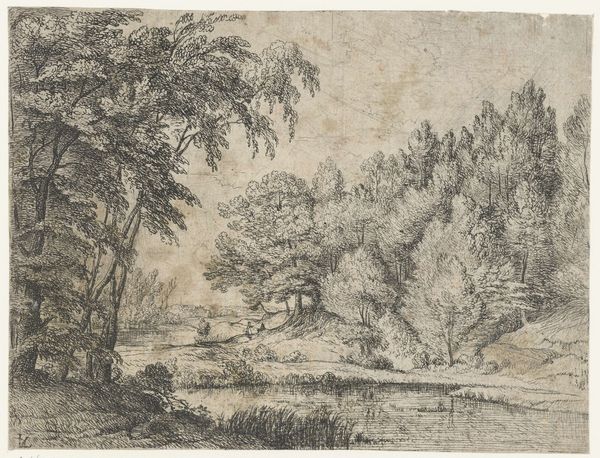
drawing, coloured-pencil, tempera, paper, pencil
#
drawing
#
coloured-pencil
#
tempera
#
landscape
#
house
#
paper
#
coloured pencil
#
pencil
Dimensions: 4-5/16 x 7-5/8 in. (12.5 x 19.4 cm)
Copyright: Public Domain
Editor: So, this is "Landscape with House and Trees," a drawing from between 1600 and 1700 by an anonymous artist. It's rendered in colored pencil, tempera, and pencil on paper, and it gives me this very dreamlike, almost ethereal feeling. What do you see in this piece, beyond the simple depiction of a landscape? Curator: I'm drawn to the inherent power structures embedded within seemingly innocuous landscape drawings. The ownership of land, the idea of "landscape" as a construct tied to colonialism and the enclosure movement... How does the house, a symbol of domesticity and private property, sit within that broader historical context? Consider, whose land is this? Who is allowed to be represented, to be included, within this view? Editor: That's a really interesting way to look at it! I hadn't considered the socio-political implications of land ownership reflected in a simple landscape. Is it possible to know anything about those power dynamics given that this artist is anonymous? Curator: The anonymity actually speaks volumes, doesn't it? The lack of a singular authorial voice allows us to project various narratives onto it. Perhaps the artist was deliberately obscuring their identity to critique those very power dynamics. Or perhaps they were simply excluded from the art historical canon. The very act of preservation and display of such a piece raises questions about institutional biases. Do you think it reflects the life of a particular community, and the lack of records around their experiences? Editor: Wow, that makes me reconsider my initial impression. I thought it was simply pretty. Curator: "Pretty" can be a dangerous word, masking deeper inequalities. This drawing compels us to excavate the forgotten narratives. Editor: I’m starting to see art in a completely different way! Thank you! Curator: And I am reminded that we must question everything, to give back a voice to art, through knowledge of intersectional pasts and potential futures.
Comments
No comments
Be the first to comment and join the conversation on the ultimate creative platform.

